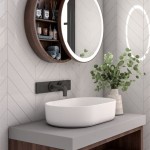How To Mirror Flip Your Computer Screen
Mirroring or flipping a computer screen can be useful for various purposes, such as presentations, sharing content on a reversed screen, or accommodating different viewing angles. This article provides a comprehensive guide on how to achieve this on Windows and macOS systems. Different methods are highlighted, catering to diverse needs and technical skills.
Using Display Settings (Windows)
Windows offers native functionality to mirror or flip the screen directly through the display settings. This method is generally the easiest and most accessible for most users. Access this feature by right-clicking on the desktop and selecting "Display settings." Within the display settings menu, locate the "Orientation" dropdown menu. This menu typically offers four options: Landscape, Portrait, Landscape (flipped), and Portrait (flipped).
Selecting "Landscape (flipped)" will mirror the screen horizontally, while "Portrait (flipped)" will mirror it vertically. Once the desired orientation is selected, the changes are applied immediately. Users can then adjust other display settings, such as resolution and scaling, as needed within the same menu. Reverting to the standard orientation follows the same process – simply select "Landscape" or "Portrait" from the dropdown menu.
Utilizing Graphics Control Panel (Windows)
For more granular control over screen orientation and other display properties, users can access the graphics control panel provided by their graphics card manufacturer (e.g., Intel, NVIDIA, AMD). This panel usually offers advanced display settings not readily available in the standard Windows display settings. Accessing the graphics control panel typically involves right-clicking on the desktop and selecting the appropriate option from the context menu, which may vary depending on the graphics card.
Within the graphics control panel, navigate to the display or rotation settings. Here, users should find options to rotate or flip the screen. The specific nomenclature and organization of these options might differ based on the graphics card and driver version. After selecting the desired mirroring option, apply the changes to implement them. This method provides a comprehensive way to manage screen orientations and often includes additional features for customizing display behavior.
Employing Shortcut Keys (Windows)
Certain graphics card drivers allow for quick screen rotation and mirroring using keyboard shortcuts. These shortcuts provide a convenient way to switch orientations without navigating through settings menus. While the specific key combinations vary depending on the graphics card and driver, common shortcuts involve combinations of the Ctrl, Alt, and arrow keys.
For example, Ctrl + Alt + Up arrow typically returns the screen to standard landscape orientation, while Ctrl + Alt + Down arrow flips the screen vertically. Ctrl + Alt + Left arrow or Ctrl + Alt + Right arrow often rotates the screen 90 degrees left or right, respectively. Users can consult their graphics card documentation or manufacturer's website to identify the specific shortcut keys associated with their system. Experimenting with different combinations involving Ctrl, Alt, and the arrow keys can also help discover these shortcuts.
Using System Preferences (macOS)
macOS provides a straightforward method to mirror or rotate the display through System Preferences. Access System Preferences by clicking the Apple icon in the top-left corner of the screen and selecting "System Preferences." Then, click on "Displays." Within the Displays settings, select the "Rotation" dropdown menu, usually located in the "Display" tab.
This menu provides options to rotate the display by 90, 180, or 270 degrees. Selecting 180 degrees effectively mirrors the screen. After selecting the desired rotation, the changes are applied immediately. To revert to the standard orientation, simply select the default rotation setting (usually 0 degrees) in the same dropdown menu. This method allows for quick and easy screen manipulation within the standard macOS system settings.
Third-party Software
Various third-party software applications offer screen mirroring and rotation capabilities, often providing additional features and customization options beyond those available in the operating system's built-in settings. These applications can be particularly helpful for specialized scenarios, such as presentations, streaming, or screen recording.
When choosing third-party software, consider factors such as ease of use, features, compatibility with the operating system, and system resource usage. Many free and paid options are available. Carefully evaluate the software's capabilities and reviews to ensure it aligns with individual needs and system requirements.

How To Mirror Flip Your Screen Without Using

How To Mirror Flip Your Screen Complete Guide

How To Rotate And Flip Your Computer Screen Otech

How To Rotate And Flip Your Computer Screen Otech
How To Rotate Screen On Windows 10 And Flip Pc Display

2 Simple And Easy Ways To Rotate Your Computer Screen Wikihow

3 Ways To Rotate The Screen On A Chromebook Beebom

How To Mirror Flip Your Screen Complete Guide
How To Flip A The Top 4 Easiest Ways With Pictures Animaker

How To Turn Your Computer Screen Upside Down Pc Mac More








